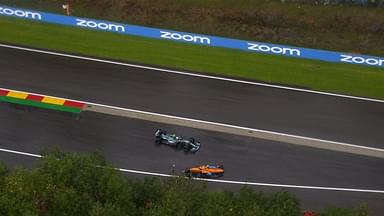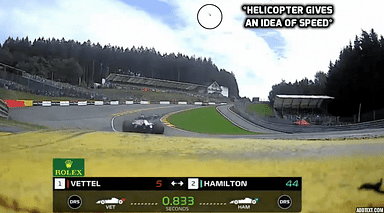Eau Rouge Spa: The iconic part of the track in Spa is highly enjoyed by the drivers and fans, but what makes it special in the F1 world?
Eau Rouge, the most thrilling section of the Spa International circuit is adored for the mammoth steep it has, giving a majestic sight to the audience and a bit scare to the drivers.
The speed through which an F1 car goes through from this corner is a sight to behold. F1 cars can take up to 300km/hr through Eau Rouge due to high downforce, one of the highest speeds recorded in motorsport.
In an article published by ESPN, it ranked as the top corner in the sport. Their argument states “Eau Rouge creates a 1.7G compression for drivers in a modern F1 car, throwing them out at the top of the hill — Raidillon — at breathtaking speeds.”
Stunning at any angle 🤩🎥
Let’s do it all again on Saturday!#BelgianGP 🇧🇪 #F1 pic.twitter.com/xEeFhMau4O
— Formula 1 (@F1) August 28, 2020
The iconic corner in Formula 1 has given some memorable sights, nobody could forget the famous battle between Mark Webber and Fernando Alonso at this corner in 2011.
“If you take away Eau Rouge, you take away the reason why I do this,” said Ayrton Senna in 1993. Thus, it’s unpredictability, the thrill and the might of the steep makes it so iconic. Hence, we expect to see similar action on Sunday around Eau Rouge.
Recent developments to make Eau Rouge- Spa safer
At the beginning of 2000s, the gravel trap on the outside of the corner replaced with asphalt as the push for improved safety continued. Meanwhile, the support paddock pit lane exit was moved to the inside of the corner.
No one:
Eau Rouge: pic.twitter.com/HaDx17QVqO
— ᴍᴀʀʟ | ʀᴀᴄᴇ ᴡᴇᴇᴋ 🇧🇪 (@FormuIaUno) August 28, 2020
The exit kerb at the top of the hill was also flattened, helping ensure drivers continued to take Eau Rouge at nerve-shredding speeds. Coming onto the next decade Eau Rouge remained almost the same.
Also read: F1 Fantasy Tips: Formula 1 Fantasy League Predictions and Best Picks for the Belgian Grand Prix 2020
But the innovation in technology brought in new aspects, the advent of the F-duct in 2010 led to some negotiating the corner one-handed so as to ensure the aerodynamic aid was activated efficiently, while when the DRS was introduced in 2011 the drivers were banned from using it in Eau Rouge because of safety concerns.



